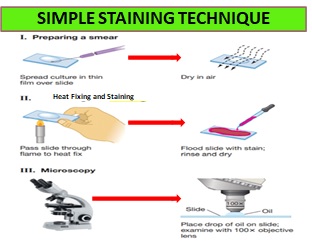Bioburden study protocol for finger/Bonnet/Filter bag
This article contains the information about Bioburden study protocol for finger/Bonnet/Filter bag
Bioburden study protocol for finger/Bonnet/Filter bag
RECOVERY OF MICROBIAL BIOBURDEN FROM THE RINSE SAMPLE OF FINGER/BONNET/FILTER BAG AND FILTER TO INCREASE THE SELF LIFE FROM 3 YEAR TO 5 YEAR
OBJECTIVE:
To validate the recovery of bioburden from Finger/Bonnet/ filter bag.
SCOPE:
Applicable to Finger/Bonnet/Filter bag used in manufacturing (granulation and pellet formulations).
JUSTIFICATION FOR SELECTION OF PROCESS:
- Microbiological monitoring of Finger/Bonnet/Filter bag is carried out to access the bioburden present in it.
- This experiment evaluates the procedure used to recover the added microorganism from the Finger/Bonnet/Filter bag material rinse sample.
- After successful study the self-life will be increased.
SITE OF THE STUDY:
Site of study to be recorded in the validation report.
RESPONSIBILITY:
Production:
Engineering:
Quality Control:
Quality Assurance:
(Individuals to be named in the validation report)
CALIBRATION / QUALIFICATION DETAILS OF TEST APPARATUS / EQUIPMENT TO BE USED:
To be recorded in the validation report
STANDARD OPERATING PROCEDURE TO BE FOLLOWED:
Microbiological method for Bioburden.
(MM number should be recorded in the study report)
CONTROLS:
Media Growth Promotion, pH and Preincubation Test:
The media used for Bioburden test should comply with the growth promotion, pH and preincubation test.
TRAINING:
Training should be given to all the personnel who are involved in the activities and the training reports should be available.
VALIDATION PROCEDURE:
- Prepare microbial culture dilutions of Escherichia coli ATCC 8739, Staphylococcus aureus ATCC 6538, Bacillus subtilis ATCC 6633 and Candida albicans ATCC 10231, Aspergillus brasiliensis ATCC 16404 and environmental isolate as per the method given in (Preparation and disposal of microbial culture media) to get less than 1000 cfu per ml.
- Take finger bag / filter bag from manufacturing department for which shelf life is more than three years and clean the same as per the production SOP.
- Collect about 200 ml of final rinse of the FBE bag and filter during washing of the bag in a sterile sampling bottle. Record the code number and material of construction of the FBE bag and filter.
- Distribute 10 ml of the rinse in separate sterile test tubes, one 10 ml rinse sample tube to be used per selected microbiological culture.
- Separately inoculate not more than 0.1 nil of culture suspension per 10 ml of rinse tube to get less than 100 cfu per ml of rinse sample.
- Carry out the Bioburden test under Laminar Air flow / Biosafety cabinet by pour plate method.
- For bioburden test use DENA (Dey Engels neutralizing agar) medium for pouring. Incubate the fungal organism plates at 20-25°C for 3 to 5 days and bacterial organism plate at 30-35°C for 3 days, at the end of incubation period observe total aerobic microbial count and fungal count.
- Perform the positive control by using 10 ml of sterile normal saline in place of rinse sample for inoculation of microbial cultures. Incubate the positive control plates along with rinse sample plates.
- Perform the sample control by pipetting 1 ml of as such rinse sample in duplicate sterile empty plates, for pouring use DENA medium used in the test. Incubate plates at 20-25°C for 3 and further at 30-35°C for 2 days
- Perform the negative control by pipetting sterile normal saline in sterile empty plate and pouring the DENA medium used in the test and incubate along with the sample control plates.
- Record the observation in the report.
ACCEPTANCE CRITERIA:
No growth should be observed in negative control plates.
Recovery observed in the rinse sample plates should be comparable to the recovery observed in positive control plates i.e. observed recovery in the rinse sample should be within the limit of 50% to 200% of positive control count
DETAILS OF NON-COMPLIANCES (DEVIATION / OUT OF SPECIFICATION):
Details of Deviation:
Deviations if any should be recorded in the report.
Details of OOS:
Any out of specification observed should be investigated and reported.
TYPE OF STUDY:
Onetime study
RESULTS / OBSERVATION:
Record the observation during the study in validation report.
SUMMARY OF FINDINGS OF EXPERIMENT:
Summarize the findings of the Validation’ Study to draw an inference.
RECOMMENDATION (INCLUDING REQUIREMENT OF ANY ADDITIONA DOCUMENTATION):
Record the recommendations based on the interpretation of the results of the Validation Report.
TEAM APPROVAL:
It should include the approval (signature) of the individuals who have performed the Validation study, supervised the validation, completed the records, performed the testing of the product and maintained the equipment.
REVIEW (INCLUSIVE OF FOLLOW UP ACTION, IF ANY):
Review comments to be recorded after verifying the report of the Product validation study carried out. Senior personnel of Quality Assurance should conduct the review.
APPROVED BY:
The validation report should be approved by head unit Quality.
NOTED BY:
Unit head/Site Head shall acknowledge the validation report by signing off as noted by.
ANNEXURES:
Annexure I: Observation Sheet for Bioburden Test of Sampling Accessories
ABBREVIATIONS:
QA : Quality Assurance
°C : Degree Centigrade
MM : Microbiological Method
SOP : Standard Operating Procedure
FBE : Fluid Bed Equipment


